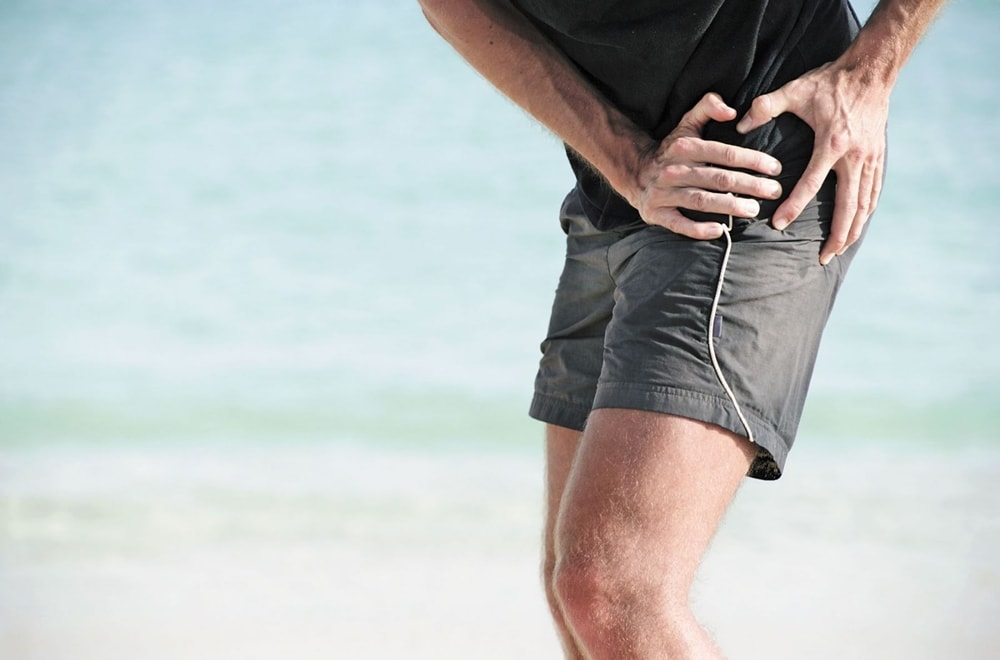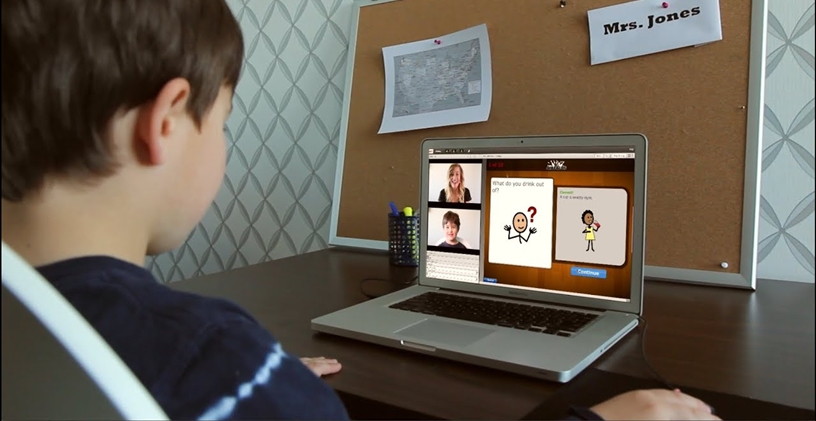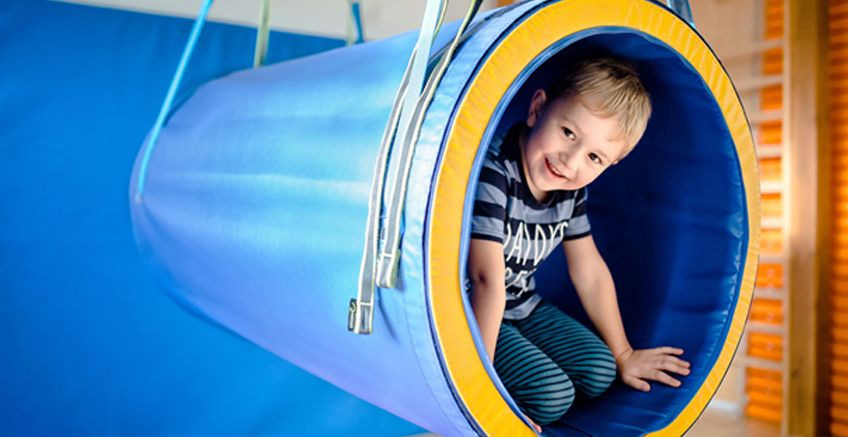Causes of Hip Pain

Hip pain is a common symptom that can be described as aching, sharp, or burning and can range in intensity from mild to severe. There are many possible causes of hip pain, including serious ones, like a fracture or joint infection, and ones that are less so (though still potentially debilitating), like arthritis or bursitis.
In order to get to the bottom of your pain, your doctor will perform a thorough medical history, physical examination, and possibly, order imaging tests. Once diagnosed, you and your doctor can work together to formulate a treatment plan—one that may entail surgery, but more commonly includes self-care strategies, like rest and ice, pain control with medication, and physical therapy.
Causes of Hip Pain
The hip is a large "ball-and-socket" joint—the "socket" being a pelvic bone called the acetabulum and the "ball" being the femoral head, which is the upper part of the thighbone. Covering this ball and socket joint is cartilage—a smooth, white tissue that cushions the bones and allows the hip to move easily.
Problems within the hip joint itself tend to result in pain on the inside of the hip (anterior hip pain). On the other hand, pain on the side of the hip (lateral hip pain) or pain on the outside of the hip, near the buttock region (posterior hip pain) is usually caused by problems with muscles, ligaments, tendons, and/or nerves that surround the hip joint.
Differentiating the various causes of hip pain by location—anterior, lateral, or posterior—is perhaps the best way to understand this somewhat complex symptom.
- Anterior Hip Pain: Problems within the hip joint, such as inflammation, infection, or a bone fracture, may result in anterior hip pain—pain felt on the inside of your hip and/or within your groin area.
- Osteoarthritis: Osteoarthritis of the hip occurs when the cartilage in the hip joint gradually wears away over time. As the cartilage frays and degenerates over time—often with increasing age or as a result of a prior hip injury—the joint space between the bones of the hip joint narrows, so bone may eventually rub on bone. Depending on the degree of osteoarthritis, pain may be dull, aching, or sharp; although, in nearly all cases, the pain and stiffness of hip osteoarthritis worsen with activity and improve with rest.
- Inflammatory Arthritis: Various types of inflammatory arthritis may affect the hip, resulting in dull, aching pain, such as rheumatoid arthritis, ankylosing spondylitis, and systemic lupus erythematosus. Unlike the pain of osteoarthritis, which is worsened with activity, hip pain from inflammatory arthritis is often eased with activity.
- Fracture: A hip fracture, or a break in the upper quarter of the thigh bone, causes a deep, boring pain felt in the outer-upper thigh or groin area. A hip fracture may occur after a fall or direct blow to the hip. It may also occur as a result of a stress injury. Stress fractures of the hip are most common in female athletes who have an eating disorder, menstrual irregularities, and bone weakening (conditions that, together, are known as the female athlete triad). Steroid use, a history of smoking, and medical conditions that weaken the bone (e.g., cancer or osteoporosis) are additional risk factors.
- Iliopsoas Bursitis: Bursitis simply translates to irritation or inflammation of a bursa, which is a small, fluid-filled sac that serves as a cushion between joints, muscles, and tendons.One bursa, located on the inner or groin side of your hip—called the iliopsoas bursa—causes anterior hip pain if inflamed. Iliopsoas bursitis, which is most common in runners or soccer players, causes anterior hip pain that may radiate to the front of the thigh area or into the buttock area. Sometimes, a snapping, catching, or popping sensation is felt in the hip with this type of bursitis.
- Hip Flexor Strain: A hip strain refers to a stretching or tearing of a muscle or its associated tendon (or both). Hip flexor muscles, like the iliopsoas muscle or rectus femoris muscle, are often involved in a hip strain. A person may develop a hip flexor strain from overuse (e.g., cyclists, martial artists, or soccer players), or from some sort of trauma, such as a direct hit during a contact sport. In addition to anterior hip pain, hip flexor strains may result in swelling, restricted movement, and muscle weakness.
- Osteonecrosis of the Hip: Osteonecrosis of the hip occurs when the hip bone does not receive a sufficient blood supply, which leads to the death of the bone cells and the destruction of the hip joint. The vast majority of cases are due to corticosteroid use and excessive alcohol intake. Besides anterior hip pain and groin pain that worsens with walking, a person may experience pain in the thighs, buttocks, and/or knees.
- Hip Labrum Tear: Your hip labrum is a band of cartilage-like tissue that courses around the outer rim of your hip socket. This labrum helps to support the joint and deepen the socket. Sometimes overuse or an injury to your hip can cause a tear in your labrum, prompting dull or sharp anterior hip pain that worsens with weight-bearing.
- Femoroacetabular Impingement (FAI): In femoroacetabular impingement (FAI), bony growths develop around the hip joint. These growths can restrict movement and eventually cause tears of the labrum and hip osteoarthritis. The symptoms of femoroacetabular impingement include an aching or sharp pain in the groin area that moves toward the outside of the hip.The pain is often felt once standing after sitting for a prolonged period of time. Stiffness and limping are also common.
- Infected Hip Joint: Uncommonly, the hip joint may become infected (called a septic joint).In addition to severe anterior hip and/or groin pain, swelling, warmth, and restricted hip movement are typically present. Fever often also occurs, but may not be present in older individuals.
- Bone Cancer: Rarely, bone cancer (either primary or metastatic) may cause hip pain. Usually, the pain starts off being worse at night, but as the bone tumor progresses, the pain often becomes constant. Swelling around the hip area may also occur along with weight loss and unusual fatigue. Due to bone weakening from the cancer, a hip fracture may occur.
- Lateral Hip Pain: Lateral hip pain refers to pain on the side of the hip, as opposed to the front or back of the hip.
- Trochanteric Bursitis: Trochanteric bursitis causes sharp lateral hip pain that often spreads down into the thigh and knee. The pain is usually worse at night when sleeping on the affected hip and when engaging in physical activities like walking or running. Over time, the pain may evolve into a deep aching pain that spreads over a larger area of the hip.Swelling and limping may also occur.
- Snapping Hip Syndrome: Snapping hip syndrome causes a snapping or popping sensation and possibly lateral hip pain with walking or other movements, like getting up from a chair. The actual "snapping" is due to one or more tight muscles, tendons, or other soft tissue moving over a bony structure within your hip. One commonly affected "tight" or irritated tissue is the iliotibial band (IT band)—a thick collection of connective tissue that starts at the hip and runs along the outer thigh.The snapping sound results from the area where the IT band passes over the greater trochanter (the upper portion of the thigh bone). This condition is most common in people who engage in sports or activities that cause them to frequently bend at the hip (one reason why it’s also referred to as "dancer’s hip.")
- Posterior Hip Pain: Posterior hip pain, which is pain felt on the outside of the hip or buttock area, is usually due to a problem with the muscles, tendons, or ligaments that surround the hip joint, as opposed to the actual joint itself.
- Hamstring Muscle Strain: Muscle strains result from small micro tears in muscles caused by a quick twist or pull to the muscle. When this occurs to the hamstring muscles located around the hip joint, buttock pain and/or pain in the back of your hip occurs.
- Sacroiliac Joint Problem: The sacroiliac (SI) joint connects the lower spine to the pelvis. You have one located on both sides of your body. Various problems with the SI joint, including arthritis of the joint, infection of the joint, and injury to the joint ligaments, may result in posterior hip pain. The sharp and/or burning pain is often worse with standing and walking, and may radiate from the hip down the back of the leg.
- Piriformis Syndrome: Piriformis syndrome—also called deep gluteal syndrome—occurs when the sciatic nerve (a large nerve that branches off from your lower back into your hip, buttock, and leg) becomes irritated or compressed by the piriformis muscle, which is located deep within the buttock, near the top of the hip joint. The burning or aching pain of piriformis syndrome typically begins in the posterior hip and buttock region and moves down the back of the thigh.
When to See a Doctor
It’s important to seek immediate medical attention if your hip pain is sudden, severe, getting worse, or if you have fallen or experienced another form of trauma to your hip.
While not an exhaustive list, other symptoms that warrant immediate medical attention include hip pain associated with:
- Fever
- An inability to bear weight or walk40
- Leg or foot weakness
- Swelling
- Bruising or bleeding
- Warmth over the hip
References
This article is written by Laura Inverarity. You can reach the original version of this article from here.







